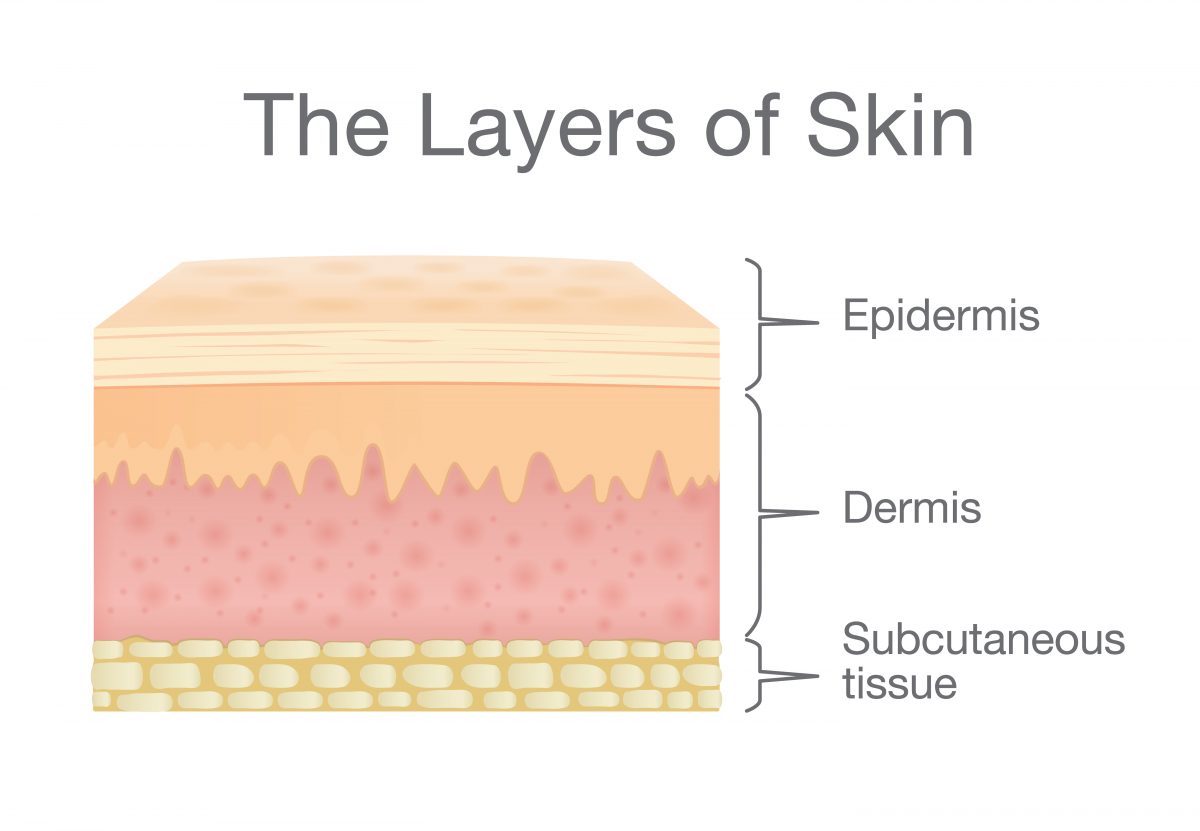How To Draw The Integumentary System
The Iii Layers of Skin and Their Functions
Skin is the trunk's largest organ and it functions as function of the integumentary system, which works to protect the body from different kinds of damage. Your pare shields yous from environmental elements, ultraviolet radiation, chemicals, weather condition conditions, and microbes. Skin likewise contains nerves that allow the states to access sensations like touch, oestrus, and cold.
There are 3 main layers of skin that offer all of these amazing protections and more. Keep reading Florida Dermatology and Skin Cancer Center'south guide to the layers of skin and their functions.
1. The Epidermis
The epidermis is the water-resistant outer layer of skin and the body's first line of defense against ecology elements, ultraviolet radiation, bacteria, and other germs. Information technology's fabricated up of 4-five sublayers of closely packed cells. The epidermis is responsible for the prison cell renewal bike: dead skin cells slough off the stratum corneum (the superficial sublayer of pare visible to the center) and are replaced with new, good for you cells that generate inside deeper sublayers of the epidermis. The epidermis also includes your pores, which let oil and dirt to escape your body.
The epidermis contains several specialized cells, including:
- Keratinocyte cells that create and store keratin, the protein that strengthens pare
- Langerhans cells that aid prevent infection and protect the immune system
- Melanocyte cells that produce melanin, the paint that determines skin color
- Squamous cells and basal cells , which can mutate and cause basal cell carcinoma and squamous cell carcinoma
ii. The Dermis
The dermis is the layer of peel under the epidermis. This layer of pare contains connective tissues and houses your body's hair follicles, sweat and oil glands, and blood vessels. The dermis also contain nerve endings that are responsible for sending messages to the brain when you burn down your hand on a hot stove or feel an crawling at the back of your neck. Blood vessels located in the dermis aid supply your skin with fresh blood carrying the oxygen and nutrients information technology needs to be healthy.
Within its connective tissues, the dermis produces two important proteins:
- Collagen and elastin , which are responsible for the shape, construction, firmness, and elasticity of your skin.
iii. The Hypodermis
The hypodermis is fabricated of subcutaneous (under the skin) fats, connective tissues, claret vessels, and nerve cells. It's the layer of pare where fat is deposited and stored. The claret vessels in the hypodermis are bigger and connect to the rest of your trunk. Stored fat helps regulate body tissue and cushion your body's internal organs against bumps, hard bear on, and falls.
The tissue in the hypodermis produces one important cell:
- Adipocytes that shop fat used for energy, cushioning, and insulation.
At Florida Dermatology and Pare Cancer Centers, our medical professionals are experts in the field of hair, pare, and nails. We provide a range of services in general dermatology, corrective dermatology, pare cancer treatment, and Mohs skin cancer surgery. Contact one of our part locations today to schedule a consultation.
Source: https://fldscc.com/2020/01/30/three-layers-skin/
Posted by: greenoury1954.blogspot.com



0 Response to "How To Draw The Integumentary System"
Post a Comment